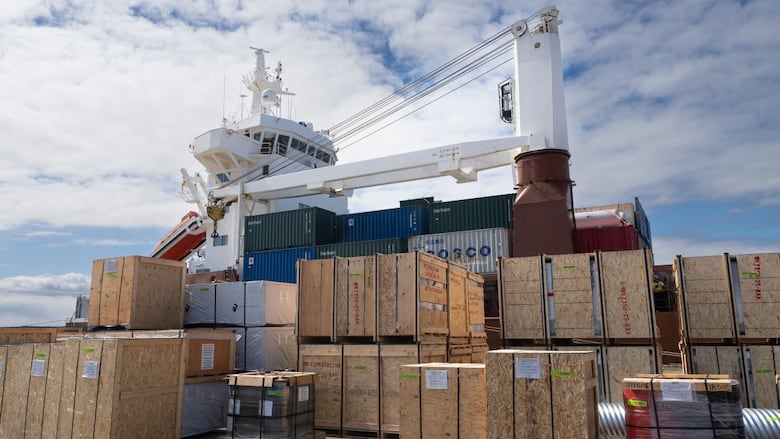Manitoba must prepare for year-round Hudson Bay shipping access, port owner says
Port of Churchill boosts railway access, critical mineral storage capacity

Year-round shipping access through Hudson Bay is a possibility that Manitoba needs to get ready for, and the head of the group that owns the Port of Churchill says it's possible to strike a balance between environmental concerns and tourism interests.
Trade tensions between Canada and the U.S. have sparked renewed interest in the Port of Churchill, with Manitoba Premier Wab Kinew saying it could be a good option for increased trade with Europe and expansion could fit with the federal government's plan for nation-building infrastructure.
The port, which has a brief operational window each summer, is owned and operated by Arctic Gateway Group, a partnership of dozens of First Nations and Hudson Bay communities.
Chris Avery, Arctic Gateway Group's CEO, said University of Manitoba researchers expect climate change will completely open up sea lanes in Hudson Bay within the "generation of our kids or our grandkids."
"We need to start preparing for that," he said at a news conference Tuesday.
In recent years, the federal and provincial governments have invested millions of dollars in the railway line and port as a way to secure a trade route through Hudson Bay and the Arctic to overseas markets.
While interest in the port has renewed under current economic strains, so too have environmental concerns. Kinew has been open to the idea of a pipeline and a second port on the bay that might have a longer ice-free season and be farther away from the sensitive ecology in the Churchill area.
However, Avery cited the Port of Vancouver — Canada's largest port — as an example of a Canadian port that successfully strikes a balance between environmental concerns and tourism interests.
"It can be done."
Avery also said Arctic Gateway is not focused on the idea of a second port on Hudson Bay.
A map of the proposed NeeStaNan corridor suggests it would terminate near the mouth of the Nelson River. Avery says beluga whales are known to gather at the mouth of the Nelson River, which presents a challenge, and that any additional ports on Hudson Bay will face issues.
He also said, unlike Port Nelson, Churchill has established infrastructure that can support up to 5,000 people.

Avery's comments come as Arctic Gateway Group announced upgrades to Churchill's port.
A second weekly freight train is now chugging along the Hudson Bay Railway, allowing more goods to be shipped more frequently to the port, nearby Indigenous communities and Nunavut, Arctic Gateway said Tuesday.
Avery said the move shows the railway — which has endured lengthy service disruptions in the past — is now "in its best condition in more than 30 years."
Over the weekend, the port also sent out its first Arctic supply ship of the season, carrying supplies such as construction equipment, essential goods and building materials to Nunavut's Kivalliq region, Avery said.
A new critical mineral storage facility has been completed at the port, tripling the amount of critical minerals that can be stored there, he said. The port's wharf is also expected to be refaced this year.
"All that combined today provides a solid foundation for us to grow [and] to support Canada's agenda to diversify our trade away from the U.S.," said Avery.
With files from The Canadian Press